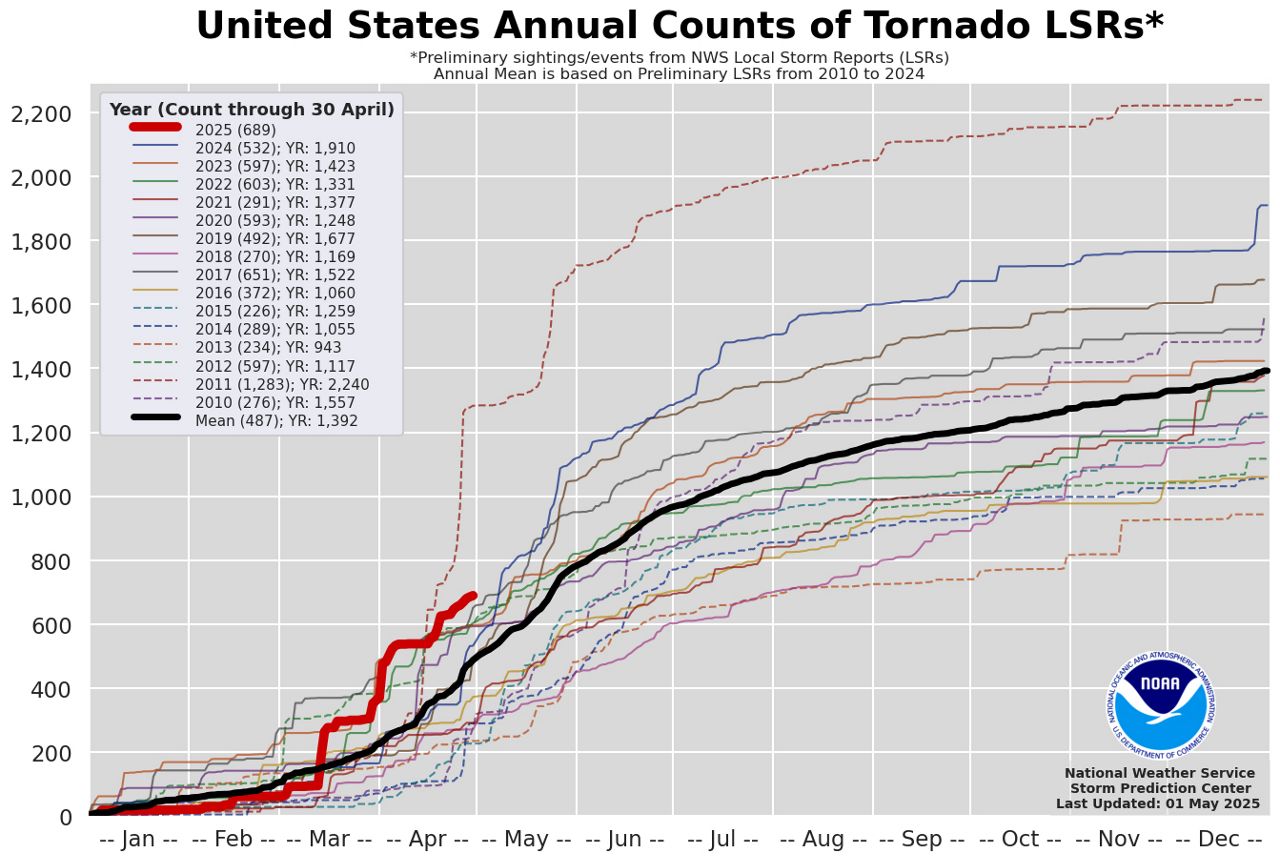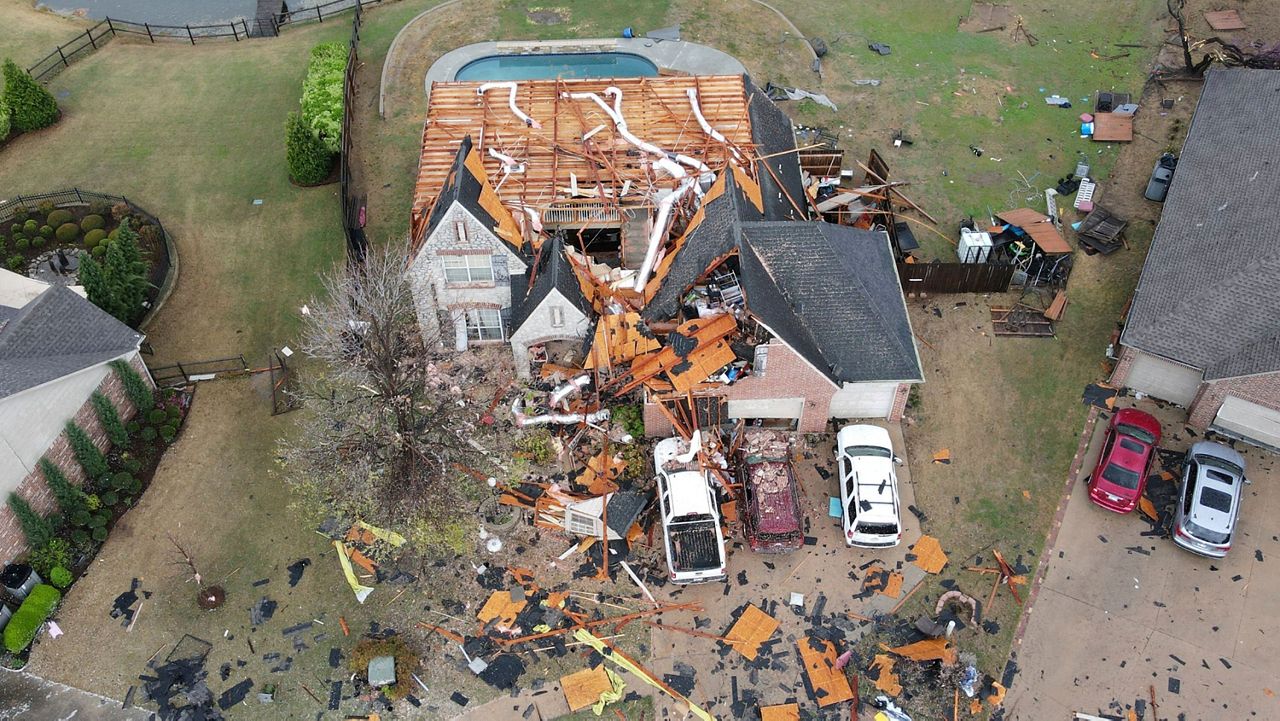In recent weeks, top stories have featured violent weather with tornadoes, damaging winds, large hail and flooding that injured people and infrastructures, and even caused fatalities.
How do these values compare to the average? Are we seeing more tornadoes than we used to or is this just par for the course at this time of the year?
If it seems like 2025 has experienced more tornadoes through the first third of the year than normal, the data backs this up. From Jan. 1 through April 30, 2025, the Storm Prediction Center has received 689 tornado reports.

However, these are preliminary tornado reports and these reports reports are not the same as actual tornadoes.
“In realtime, the National Weather Service collects what are called preliminary local storm reports. For tornadoes, these can be thought of as eyewitness reports of the tornado,” explains Matthew Elliot, warning coordination meteorologist at the Storm Prediction Center.
Reports such as damage or video of a tornado are documented, showing the location of the damage and tornado. Each report will count as one tornado preliminary report.
However, Elliot mentioned that sometimes there may be multiple reports of the same tornado, especially longer-track ones, leading to overestimated tornado counts.
“Some preliminary reports end up not being tornadic after a ground survey has been completed while others are surveyed and entered into the official database, but never have a preliminary local storm report issued,” he said, noting that's rare, but it does happen.
Take a look at the map and see the path of the individual tornadoes confirmed by the National Weather Service. Find out the wind speeds, storms reports or check out damage photos by clicking or tapping the tornado or thunderstorm icons on the interactive maps below.

